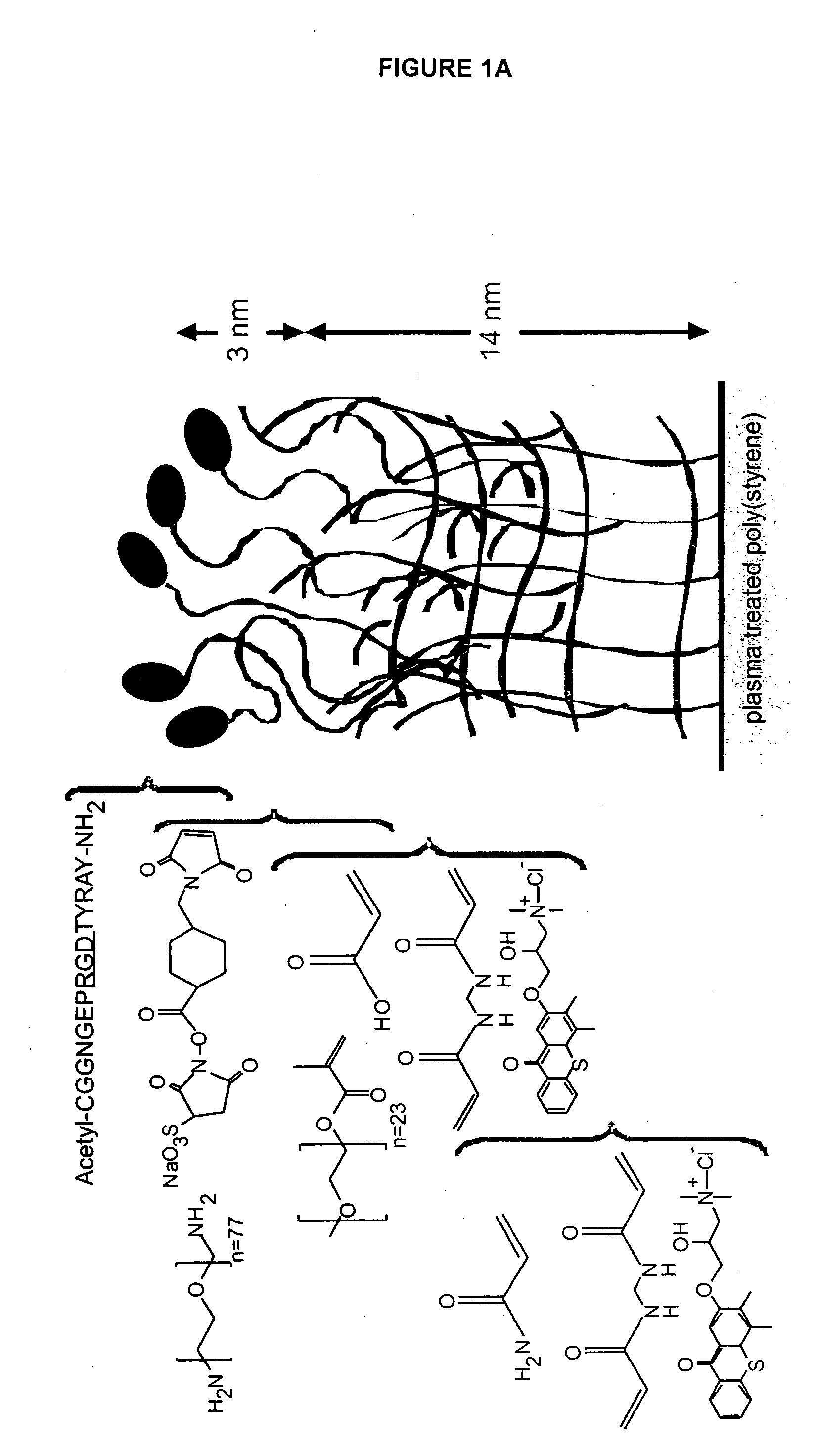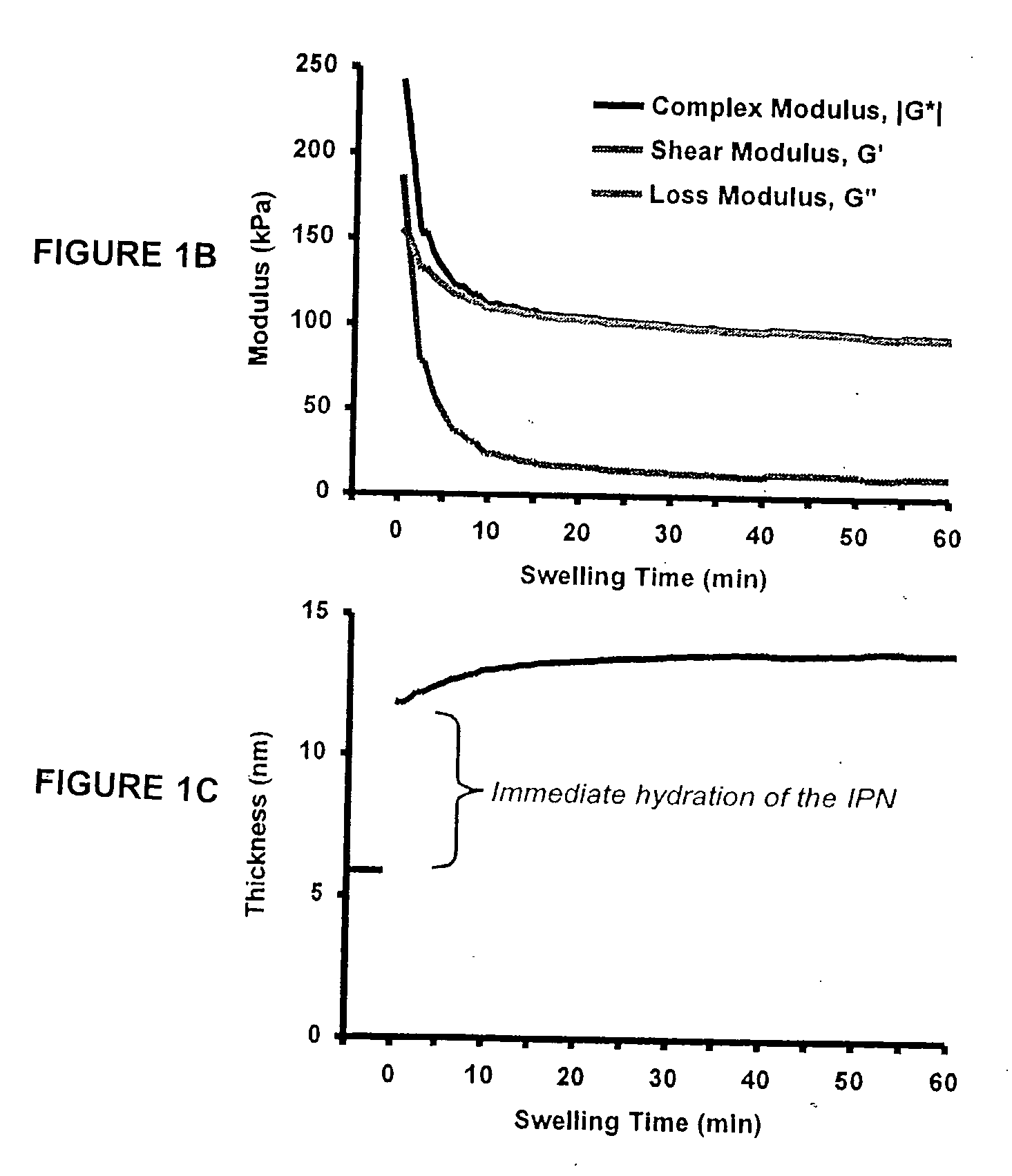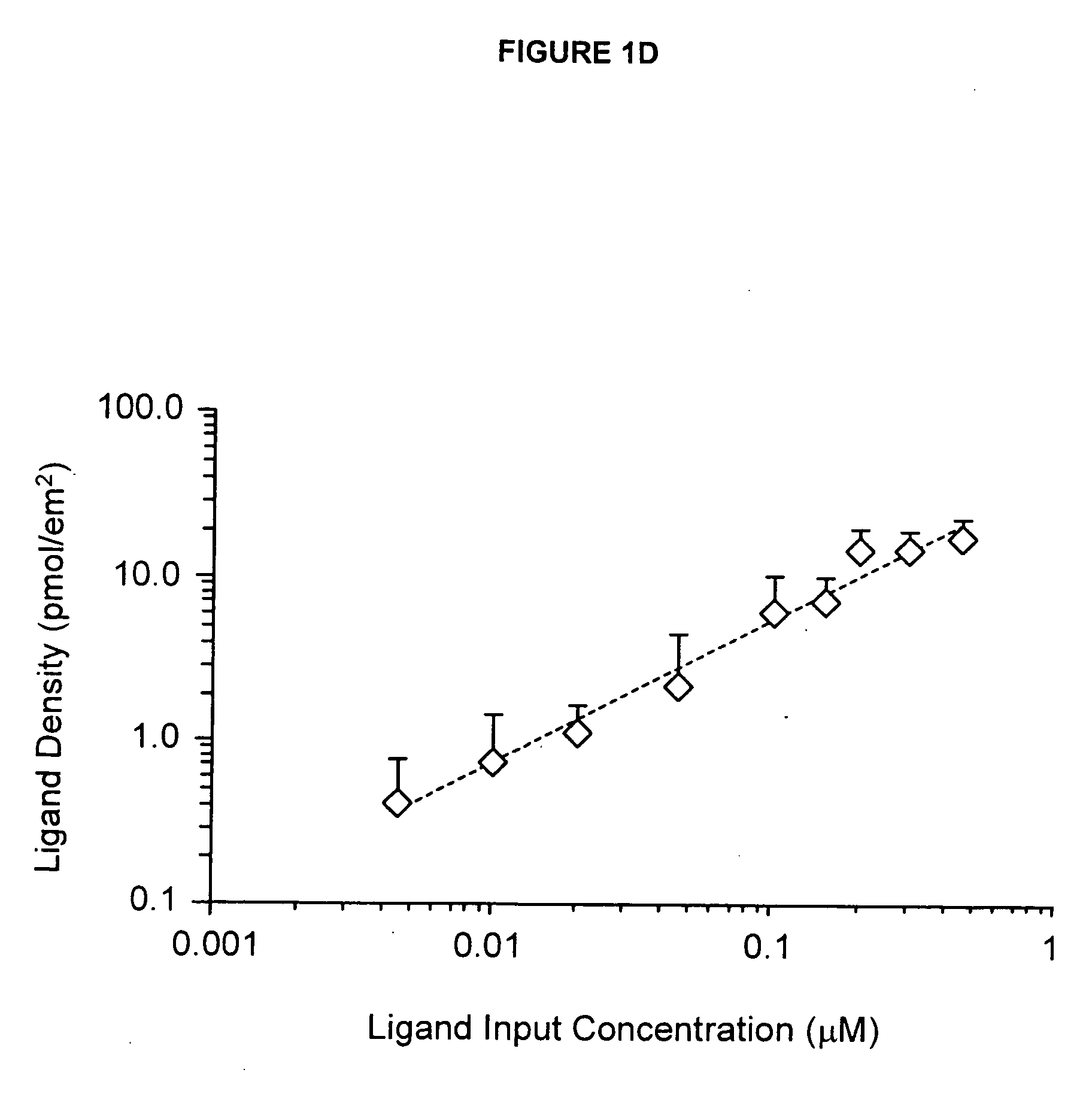Controlling stem cell destiny with tunable matrices
a stem cell destiny and matrice technology, applied in the field of stem cell destiny control with tunable matrices, can solve the problems of limiting the clinical utility of these matrices, propagating and controlling this heterogeneous cell population, and proving to be very difficul
- Summary
- Abstract
- Description
- Claims
- Application Information
AI Technical Summary
Benefits of technology
Problems solved by technology
Method used
Image
Examples
example 1
[0272] The present example details the formation of an IPN to stimulate neural stem cell proliferation incorporating bsp-RGD(15), selected from the cell-binding of bone sialoprotein (BSP), to accelerate proliferation of rat hippocamal neural stem (NSC) cells in contact with the peptide modified p(AAm-co-AAc) hydrogels. FIG. 1 provides an example of an IPN that incorporates a peptide from laminin A chain, lam-IKVAV(19).
[0273] The materials used to synthesize the IPN include the following: Acrylamide (AAm), poly(ethylene glycol) 1000 monomethyl ether monomethacrylate (PEG1000MA), acrylic acid (AAc), and N,N′-methylenebis(acrylamide) (BIS; Chemzymes ultrapure grade) were purchased from Polysciences, Inc. (Warrington, Pa.). N-hydroxysulfosuccinimide (sulfo-NHS), 2-(N-morpholino) ethanesulfonic acid, 0.9% sodium chloride buffer (MES), and sulfosuccinimidyl 4-(N-maleimidomethyl) cyclohexane-1-carboxylate (sulfo-SMCC) were acquired from Pierce (Rockford, Ill.). QTX ([3-(3,4-Dimethyl-9-oxo...
example 2
[0286] This example details the creation of IPN coatings of varying stiffness to investigate the combined effects of substrate modulus and ligand density on stem cell self-renewal and fate determination. The materials used in this synthesis were the following: methacryloxypropyltrimethoxysilane (MPMS) obtained from Gelest (Morrisville, Pa.); acetic acid (AA), acrylamide (AAm), bisacrylamide (Bis), N,N,N′,N′-tetramethylethylenediamine (TEMED), poly(ethylene glycol) monomethyl ether monomethacrylate, MW 1000) (PEGMA), camphorquinone (CQ), acrylic acid (AAc), and 3400 MW diamino-PEG [PEG(NH2)2] obtained from Polysciences (Warrington, Pa.); ammonium persulfate (AP), methanol (MeOH), and dichlorodimethylsilane (CMS) obtained from Sigma-Aldrich (St. Louis, Mo.); 1-ethyl-3-[3-dimethylaminopropyl]-carbodiimide hydrochloride (EDC), N-hydroxysulfosuccinimide (Sulfo-NHS), and Sulfosuccinimidyl-4-(N-maleimidomethyl)-cyclohexane-1-carboxylate (sulfo-SMCC) obtained from Pierce (Rockford, Ill.); a...
example 3
[0290] IPN seeded with Growth Factors and Satellite cells
[0291] Cell Culture and Seeding. Four-month-old B6.129S7-Gt(ROSA)26Sor / J mice (The Jackson Laboratory) are killed, and the satellite cells are isolated from hindlimbs, as described in Irintchev et al., Eur. J. Neurosci., 10:366 (1998). Briefly, hindlimb skeletal musculature are surgically excised, finely minced, and disassociated in 0.02% Trypsin (GIBCO) and 2% Collagenase type 4 (Worthington) for 60 min at 37° C. / 5% CO2 while agitating on an orbital shaker. Disassociated muscle can be strained in a 70-μm sieve, centrifuged at 1,600 rpm (Eppendorf 5810R) for 5 min, and resuspended in 10-mL-high glucose DMEM, supplemented with pyruvate (GIBCO). Media is further supplemented with 10% FBS and 1% penicillin / streptomycin (GIBCO). Resuspended cells are plated on an IPN of the invention, such as described in Example 1, and HGF (50 ng / mL) and FGF2 (50 ng / mL) are added to the medium. After 7 days, cultures are passaged, and purified s...
PUM
| Property | Measurement | Unit |
|---|---|---|
| Volume | aaaaa | aaaaa |
| Volume | aaaaa | aaaaa |
| Volume | aaaaa | aaaaa |
Abstract
Description
Claims
Application Information
 Login to View More
Login to View More - R&D
- Intellectual Property
- Life Sciences
- Materials
- Tech Scout
- Unparalleled Data Quality
- Higher Quality Content
- 60% Fewer Hallucinations
Browse by: Latest US Patents, China's latest patents, Technical Efficacy Thesaurus, Application Domain, Technology Topic, Popular Technical Reports.
© 2025 PatSnap. All rights reserved.Legal|Privacy policy|Modern Slavery Act Transparency Statement|Sitemap|About US| Contact US: help@patsnap.com



